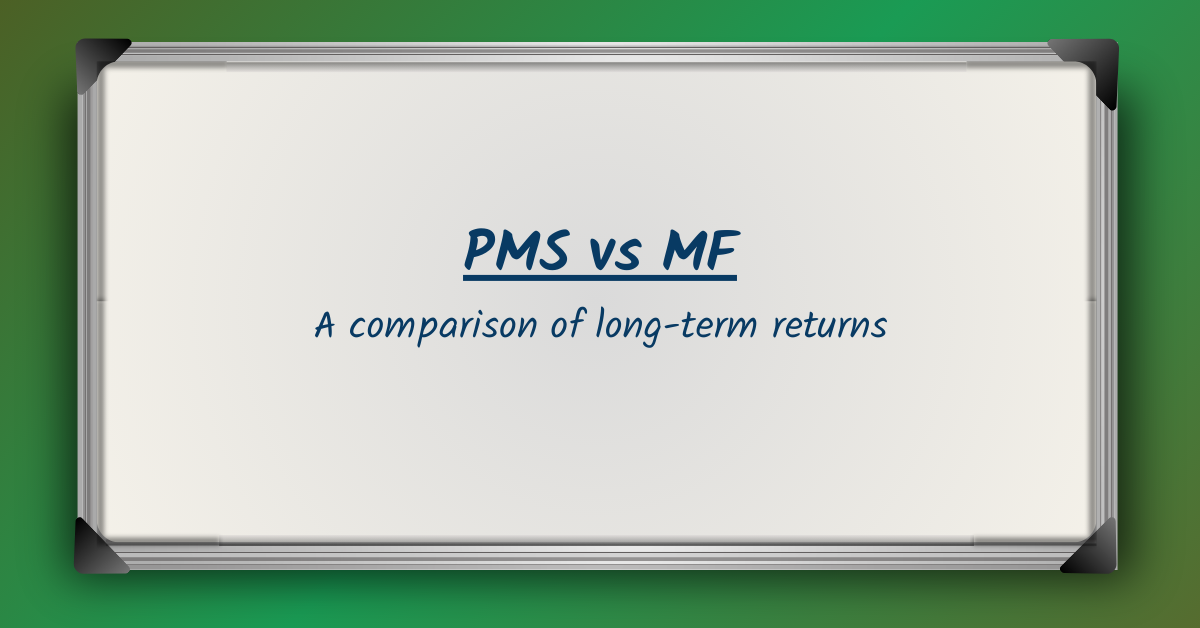
PMS vs MF: Longer-term Performance Comparison
One of the core premises of investor's preferring PMS's over MF's, is the ability for PMS's to manage more concentrated, higher risk-reward portfolios as compared to mutual funds, along with a more focussed investment philosophy & approach. This leads to the potential for longer-term outperformance.
A recurring question we often get from investors, is that does the data actually support this potential longer-term outperformance of PMS's vs MF's. In order to answer this query, at IME Capital we have undertaken a detailed analysis of all PMS & MF schemes with a 10+ year track record (CY15-24) at a category level, and compared their relative performance at a category level.
The analysis period (Jan-15 to Dec-24) is a strong representation of typical market periods, which includes periods of weak market performance (IL&FS default, COVID crisis) and strong market performance (post-NDA rally, post-COVID recovery). This period also included times when large-caps outperformed mid & small-caps, and when mid & small-caps outperformed large-caps.
The results of this analysis is given below, and provide a clear pointer towards the fact that the more-differentiated, higher risk-reward PMS strategies do indeed deliver longer-term outperformance to MF schemes.

PMS's have demonstrated outperformance to MF's
An analysis of the longer-term track record of PMS returns, does indeed show an outperformance of PMS strategies to the more generic MF strategies. Importantly, with a very strong recent trend of some of the most senior CIOs/FMs leaving MFs to set up their own PMS/AIF firms, one can argue that this trend has the potential to accelerate in the future.
Top Funds would have delivered greater outperformance
This analysis has been done using all funds with a 10+ year track record. If you study the performance of the top-rated PMS funds as per IME's methodology, the outperformance to MF's is even higher.
Owner-Managed PMS's provide stability to the core Investment Team
The performance of a fund, is ultimately driven by the investment philosophy followed & the investment team that implements the same. In the case of a MF, since fund managers are employees, there is always the risk of an investment team leaving that had delivered past-outperformance (such as Canara Robeco recently). This risk is substantially reduced in the case of owner-managed PMS firms.
Methodology
All MF's & PMS's with a published 10+ year track record have been included in this analysis. While MF CY performance data is widely available, we have only included PMS's with publicly available 10-year CY returns.
For each of the funds, we have calculated the CAGR return for the period CY15 to CY24, and used this to calculate an average 10-year CAGR for the MF & PMS across categories. This data is represented in the table above.
Note: Since we have only included funds with a 10-year + track record, and that not all PMS's disclose CY performance, the universe of PMS funds in certain categories of funds are are relatively small (below-5 in the case of largecaps, midcaps, smallcaps). The flexicap category has a much wider universe of PMS funds with a 10+ year disclosed CY returns (18), and hence the analysis on the flexi-cap category may be considered the most relevant.
PMS-AIF World Study
PMS AIF World also undertook a study comparing the performance of top-performing PMS funds vs top-performing MF funds, across different time periods. Unlike our study which focused on average performance across all funds with data available, the PMS AIF World study seeked to compare the performance of the top-performing funds across PMS's & MF's.
Top-performing PMS Funds clearly outperform top-performing MFs
Over a 10-year period, the 5 top performing PMS funds demonstrated substantial outperformance to the 5 top performing Mutual Funds. A 2.5 cr investment spread across the top-5 PMS funds would be worth Rs. 40 cr in 10 years, as compared to Rs. 26 cr in the case of the top-5 Mutual Funds.
A similar level of outperformace is seen in top-performing PMS's across specific time periods & categories. More details on this study.
